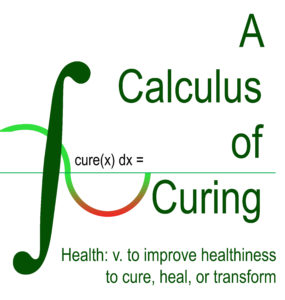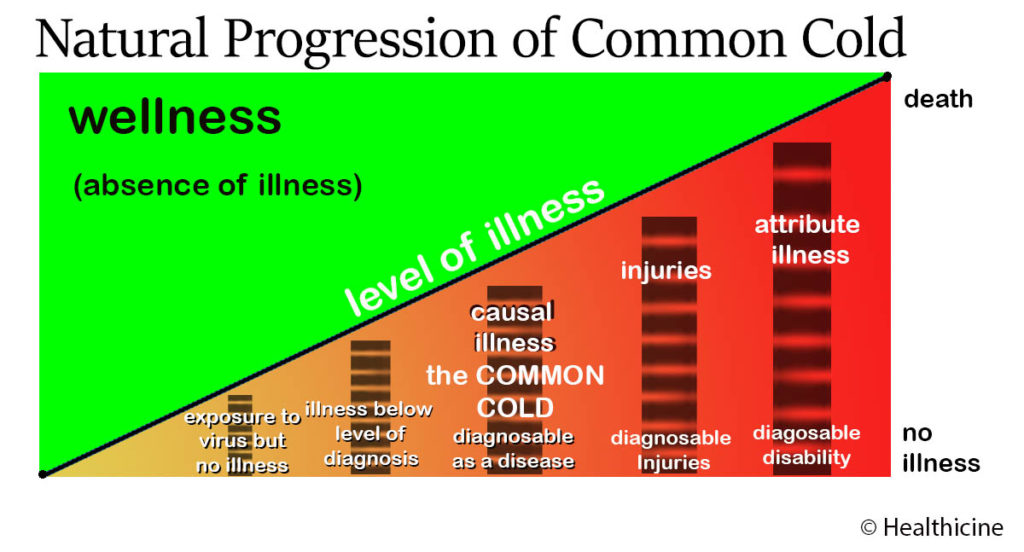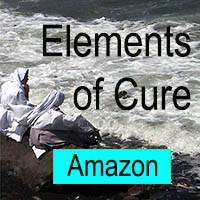 The Wuhan Virus is in the news every hour and it seems that many of the facts are quite changeable at present. Where did it come from? How dangerous is it? One question is neither asked nor answered.
The Wuhan Virus is in the news every hour and it seems that many of the facts are quite changeable at present. Where did it come from? How dangerous is it? One question is neither asked nor answered.
What is the cure? The virus is a type of corona virus, similar to common corona viruses that cause the common cold, influenza, and also SARS and swine flu. Is the Wuhan virus infection a type of cold or flu? Is it incurable or not? How might we cure it?
Is the common cold curable or incurable? Clinicaltrials.gov lists 688 research studies for the common cold (including upper respiratory infections), but when we search for cold and cure, there are only ten. Of those ten, four are about other diseases, not the common cold. One study summary did not contain the word cure (no idea why it showed in the search). Two reported that there is no cure for the common cold and instead measured reduction of signs and symptoms. One defined cure as: “Disappearance of all pre-treatment signs and symptoms of infection“, two studies in Guangzhou, China as “fever, aversion to wind individual symptoms disappeared and nasal congestion, runny nose, sore throat, cough individual symptoms disappeared“, in a fourth, cured was defined poorly, compared to a “return to baseline… best result“.
Not one cure was reported. Is there no cure for the common cold?
Many of us get several colds a year. Sometimes, we get the flu. Sometimes, a common cold leads to more serious conditions, like pneumonia, and even death. But, usually, we cure the cold and the flu with health – the best preventative, and the best cure.
In medical theory, “there is no cure for the common cold.” How can this be? In medical theory there is no cure for most diseases. The word cure is sadly neglected by medical theory and practice. Many medical dictionaries do not define the word cure. No authoritative reference text contains a scientific medical definition of the word cure. The closer we look, the worse it gets. There is no cure for any disease cured by natural healthiness, including the common cold, influenza, and measles. No diseases are cured by alternative medicine either. Cured is defined medically only for a few infections. All non-infectious diseases, from arthritis, diabetes, gout to obesity and even scurvy, have no medical definition of cured and thus can be considered incurable. Cured is not defined for any mental disorder – so all can be considered incurable. Cured is not defined for any chronic disease – and all are considered incurable in theory and practice.
What about the Wuhan virus disease (which so far, has no official name). Is it curable? Is it curable, as is the common cold, but considered incurable by the medical establishment, the medical beureacracies?
To answer this question, we begin with a basic understanding of cured. Clinical studies rarely cure. We cure cases of illness, one at a time. Therefore, every cure can be considered anecdotal. Perhaps this is one reason conventional medicine has so much trouble with cured.
It’s not difficult to define cured. A case of illness is cured when:
- The present cause of the illness has been addressed.
- Healing of damage caused by the illness has completed.
- Signs and symptoms of the illness have faded and gone.
- No more medicines are necessary.
That’s pretty basic. It is curious that no clinical study of cold cured mentioned the present cause of the disease – the first key to a cure.
Most cases of the common cold are cured. We know when a cold is cured. After it is cured, the person might get a new cold, which might also be cured. Sometimes, it’s difficult to determine if a common cold is cured – but most of the time, it’s obvious, just not scientific. Deaths from the common cold are very rare – occurring only when the cold causes a more dangerous infection. Deaths from influenza are much higher, but still very low, about 0.14 percent or 1.4 in 1000 cases.
What about the Wuhan virus? Some people show none, few, or only minor symptoms of illness. Some have more serious symptoms.Most people recover from the Wuhan virus, cured by health. How many die? There are, so far, not great statistics on the survival rate of people infected with the virus. Current statistics vary. Initial estimates are about 2 or 3 deaths in 100 cases – more than ten times more dangerous than the flu. On the other hand, current estimates can be quite inaccurate because it is difficult to account for, verify, and count all cases. Nevertheless, it seems that in most cases the Wuhan virus infection is cured. Or is it? We are now hearing reports of lung damage caused by the Wuhan virus.
The common cold affects mostly our nasal passages – which heal very quickly. We might have several colds a year without permanent damage. What about the Wuhan virus? To explore this question, let’s look more closely at the progression of illness – first, the natural progression of the common cold, as in this diagram.
 What is a cold? A cold is an illness, an intersection of a cause and a set of negative consequences. Every illness has two names, one for the cause, and one for the consequences. We cure the cause and care for the consequences. For a cold to be present, both cause and consequences must be present. When an illness has more than two names – it often indicates the presence of more than one illness, and more than one cure is required.The common cold can go through many stages and might be cured at any stage. Many of the stages are “not a cold“. Let’s look at each stage.
What is a cold? A cold is an illness, an intersection of a cause and a set of negative consequences. Every illness has two names, one for the cause, and one for the consequences. We cure the cause and care for the consequences. For a cold to be present, both cause and consequences must be present. When an illness has more than two names – it often indicates the presence of more than one illness, and more than one cure is required.The common cold can go through many stages and might be cured at any stage. Many of the stages are “not a cold“. Let’s look at each stage.
- Exposure to Cold Virus – is not a cold. We often encounter cold viruses without any signs or symptoms of a cold. We might wash our hands, removing or destroying the virus. Cold researchers have learned that, even when the cold virus is swabbed into the nasal passages of healthy students, most don’t get a cold. It almost seems as if exposure to a cold virus only rarely causes a cold.
- Signs and symptoms of a cold might be very minor – so minor we hardly notice them, or so minor that they are dismissed by patient or doctor, not diagnosed as a cold. Our healthy bodies cure colds quickly, and in some cases, before they can be diagnosed.
- Diagnosable disease, “the common cold” exists when the virus is present and causing signs and symptoms of a sufficient level and duration to be judged, by a medical professional, as a disease. Technically, a cold only exists when diagnosed by a doctor, but many colds are so obvious that a diagnosis is not really necessary. Diagnosis is more likely to occur when we are worried that it might not be a cold, that it might be worse than a cold.
- Injuries are sometimes caused by the cold virus. The cold virus destroys cells. Most of these injuries are considered part of the cold and are quickly healed by our natural healthiness. Sometimes, a cold causes injuries that are considered “not the cold“, like a bloody nose, which must heal independent of the cold.
- Disabilities are injuries that cannot be naturally healed. A cold rarely causes disabilities, but it can occur. A cold might cause damage to the nose, or the ears, for example, which cannot be healed, or damage to a tooth which can only be cured by a surgery.
A cure addresses a present cause. It is important to maintain separation of present cause and past causes throughout these stages. Past causes are important for prevention, but cannot be used to cure. Injuries that are caused by the cold, but are not part of the normal signs and symptoms of the cold are often not cured when the cold is gone, cured. Sometimes, curing all of the effects of a cold requires several independent cures.
When is the common cold cured? It’s not possible to cure an illness unless it exists. If we are exposed to the virus, but it doesn’t cause an illness – Stage 1, there is nothing to cure. Stage 2, on the other hand, is probably the most common case of common cold cured. We get a cold, we don’t bother consulting a doctor, there is no diagnosis, and the illness is cured by health. A medical professional might deny the cure – perhaps even denying the cold. But it makes little difference to the patient, or to the actual situation. Stage 3 is when the cold has been diagnosed as a disease. After it is cured, it’s cured. But medically, there is no test and no proof of cured for the common cold. Stage 4 – natural injuries caused by the presence of a cold (possibly in the past) are – like all injuries – cured by healing. It is useful to define an injury as “that which can be cured by healing“. No medicine can cure an injury, although some nutrients, like Vitamin C can aid the cure and healthy exercise also stimulates healing. Medically, there is no test for an injury cured – so all cures are ignored. If the cold reaches Stage 5, causing a disability or an injury that cannot be healed, that might be cured by a medical professional, or it might be incurable. For example, if the patient’s sneezing caused a cracked tooth, the tooth can be cured by a dental surgeon, perhaps by a filling or an extraction. There’s just one catch, as usual. Although surgery is generally recognized as a curative technique, there is no test for cured after a surgery.
So, there is no cure for the common cold. There are no statistics for the common cold cured. Whether the cold is cured before or after diagnosis makes no difference. There are no cures for any injuries caused by the common cold.
What about the uncommon (caused by Wuhan virus) cold? Can it be cured?
Of course it can, but like the common cold – not every case, not every stage, not every illness caused by or attributed to the virus. At Stage 1 of exposure to the Wuhan virus many people develop no signs or symptoms, no cure is needed. At Stage 2, some people might be cured before any medical analysis is competed, although the current attention paid to the Wuhan infections means that a lot more attention is paid to any cold or flu like infection that might be caused by Wuhan. At Stage 3, if a medical test is given, a doctor can diagnose a Wuhan virus infection. Most cases are cured by health. Cures, just like cures for the common cold, the flu, measles, and similar infections, are simply ignored. There is no medical science of cure. Sometimes, perhaps much more often than the common cold or flu, the Wuhan virus illness causes other injuries, Stage 4, which must be healed. Sometimes it causes disabilities – injuries which cannot be healed, Stage 5. Sometimes it causes death. Much more often than the common cold or influenza.
The overall model is identical for many infectious and non-infectious diseases, the major differences in each case being the severity and frequency of injuries, disabilities, and death.
The illness is cured by health. But… Health is slow and steady. We can’t create healthiness after the patient is infected. Health is honest and true, we can’t fake health with medicines. As a result, modern medical chauvinism claims “there is no cure for“.
Most, perhaps all, of the current attention paid to the Wuhan virus has nothing to do with cures. Wuhan is studied as a disease by epidemiologists, who study the ebb and flow of disease. as Thomas A. Timmreck, advises in Introduction to Epidemiology, “Epidemiology is more interested in prevention and control of diseases than secondary and tertiary curative approaches.” Dictionaries of epidemiology do not define cure. Epidemiologists want to prevent illnesses caused by the Wuhan virus. Epidemiologists are working hard to discover source(s) of the Wuhan virus, but not the cure.
“Health is the Best Preventative, health is the best cure, the only true cure,” The Healthicine Creed. The Wuhan virus illness is being cured today. But if we want more cures, better cures, and better preventatives, we need to study health, as thoroughly as we study diseases.
It might be possible to find a treatment that speeds up the cure of the 2019-nCov virus, but to do so, we must acknowledge the concept of cure and study cures. Today, we study diseases to death, but no-one studies the cured. Was 1894 the year we stopped studying the cured, and began marketing treatments that make no attempt to cure? Is anyone working on a better cure? I haven’t heard anything in the news. It seems that modern medicine is stuck on preventatives, like vaccination, with little interest in cures.
to your health, tracy
 This post is based on the principles of cure published in the books The Elements of Cure and A Calculus of Curing, which explore the concepts of cure, cures, curing and cured in detail.
This post is based on the principles of cure published in the books The Elements of Cure and A Calculus of Curing, which explore the concepts of cure, cures, curing and cured in detail.


